By Mariah Bourne & Lauren Danson
You've just brewed the last of your sencha, and your next order won't be in until tomorrow. Then the question arises – can you reuse loose-leaf tea? Wish you could enjoy another cup in the afternoon? We have lovely news – high-quality Japanese green tea can and should be steeped multiple times!
 Mizuba gyokuro is a great tea to steep mulitple times!
Mizuba gyokuro is a great tea to steep mulitple times!
Reusing (or re-brewing) tea leaves is common and appreciated in Japanese tea culture. Distinct flavors and aromas are released with each subsequent brew. Some tea styles taste better on the second, third, or even fourth brew. But there are some critical best practices for reusing tea leaves. In this article, we’ll explain how to properly rebrew tea leaves and some creative ways to reuse them beyond brewing.
Why Reuse Loose Leaf Tea
The term chagara, which translates to “used tea leaves”, is a household term in Japan. Japanese green teas are perfect for multiple infusions since their leaves can hold up very well when steeped more than once. The flavor and aroma of Japanese green teas, like sencha and gyokuro, change and develop with every brew.
Let's take Mizuba’s gyokuro, for example. The first brew can reveal sweet, light citrus notes and layers of syrupy pear and peach flavors. By the third brew, you might experience more pronounced savory umami and a seaweed-like aroma. Some teas may also take a couple of steeps for their leaves to uncurl and diffuse completely (which reveals more surface area of the leaf to extract) resulting in a more prominent, in-depth flavor.
Steeping loose-leaf tea multiple times doesn't only highlight different unique characteristics, but it's also cost and time efficient. Using the same tea leaves helps you further enjoy your tea while saving money. You’ll also save time when you reuse tea leaves – especially if you enjoy having multiple cups daily.
 Brewed gyokuro leaves
Brewed gyokuro leaves
How to Reuse or Rebrew Loose Leaf Tea
Many Japanese green teas can be brewed about two to three times. Using different temperatures and brewing times on subsequent brews brings out distinct density in flavors and aroma. For a second infusion or nisenme, you may use hotter water and a shorter brewing time if the leaves have already unrolled enough from the first brew. Still, you can experiment with different ways to reuse tea leaves and decide what tastes best to you. Just remember that the variables of time and temperature will always be the dominant factors in being able to mitigate your desired flavor profile. If we use our gyokuro example again, our tea producers recommend using 10º hotter water, 10 more ml of water, and about 30 seconds longer for each subsequent brew. Different Japanese tea styles have different guidelines for second or third steeps, so get to know your tea and how it tastes from steep to steep and see what variables you enjoy!
There are a few best practices when reusing tea leaves. Tea needs to be re-steeped within an hour of its first brew. The moist environment produced after brewing is a breeding ground for bacteria. Reusing green tea as soon as possible reduces the likelihood of mold or bacteria growing on your tea leaves. We *do not* recommend letting your tea leaves dry out and then attempting re-steep. The best practice is to only do subsequent steeps of leaves you’ve recently brewed, preferably within the hour.
A favorite way to extend the value of our tea leaves at the Mizuba office is to let the 3rd steep sit for a long period of time (1-2 hours), and then pour it over ice for iced tea! That way we can enjoy every ounce of flavor our tea leaves have to offer. If you’d like to read more about iced tea, we have a great article here.

Genmaicha to be brewed in Mizuba's Tokoname kyusu
Can You Reuse Tea Bags?
Tea bags can be super convenient when on the go or in a rush. With all the benefits of reusing tea leaves, you may be wondering, can you reuse tea bags as well? We do not recommend re-steeping tea bags because, by design, leaves in tea bags are meant to be extracted quickly and generally have little flavor left once you remove the bag from your initial brew. Average tea bags contain leaf fragments and stems in bags meant for one-time use.
You won't likely experience strong flavors and aromas on your second brew with most tea bags. You also may risk the tea bag ripping if used more than once.
Ways to Reuse Tea Leaves, Beyond Brewing
You can reuse tea leaves in many creative ways once you've enjoyed the benefits of brewing them a couple of times. Here are some of our favorites:
- Cook with them: Used tea leaves can be the perfect addition to elevate sweet and savory dishes. Much of green tea’s healthy catechins remain in the used tea leaves after brewing. The vegetal, umami taste of tea leaves brings an interesting depth of flavor to many dishes. Adding chagara to salads, pestos, curries, fish, meats, or appetizers creates a delicious, healthy twist. You can also add them to your morning smoothies for more nutrients and flavor. We recommend using shaded leaves such as gyokuro or tencha for this purpose, as the shaded leaves are much more tender and pliable. In fact, after the 3rd steep, there is a tradition of eating gyokuro leaves on rice with ponzu sauce!
- DIY skin care: Japanese green tea has countless benefits for the skin. Not only does it have anti-inflammatory properties, but many styles of green tea are also packed with potent antioxidants to fight off free radicals and caffeine to improve complexion while flushing toxins from the skin. Reuse tea leaves to create a simple DIY face mask by blending them and adding a couple of tablespoons of honey and yogurt to leave your skin bright and rejuvenated.
- Household helper: Japanese green tea is an excellent household helper and can be used for many different purposes. Chagara is a perfect odor eliminator, and just like house plants, it’s particularly useful for indoor air cleaning. Infuse your plant water with chagara before watering your plants, or sprinkle the used leaves on the soil to hydrate, nourish and feed them.
- Compost: After you’ve enjoyed the flavors of multiple brews, green tea serves as a natural fertilizer for composting. The high nitrogen, potassium, and phosphorus content is the perfect material to balance carbon in your compost.
Get the Most out of Your Japanese Green Tea
There are so many ways to get every ounce of goodness from your green tea. Japanese tea culture encourages brewing high-quality teas multiple times to experience the range of unique flavors and aromatics each style has to offer. Reusing tea leaves is an easy way to ensure these valuable, antioxidant-rich leaves don't go to waste.

Pouring Mizuba organic Chamomile Hojicha
Even at the end of their journey, you don’t have to dispose of the tea leaves. Adding them to compost, using them in cooking, or utilizing their amazing properties for skin care are just some of the countless ways you can get the most out of your tea. Our high-quality Japanese loose leaf teas at Mizuba make enjoying every second of your tea time simple and intentional.
Shop Mizuba's Heritage Loose Leaf Collection


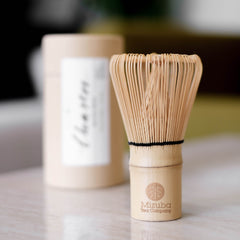
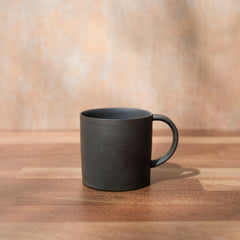
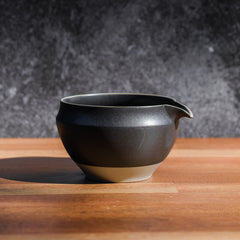
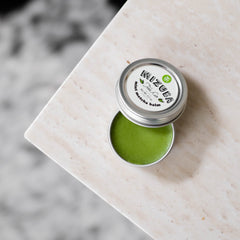
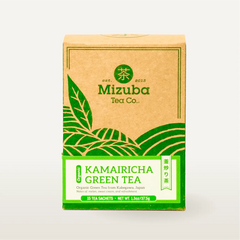

Leave a comment